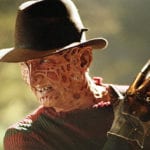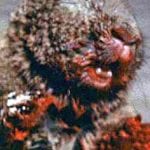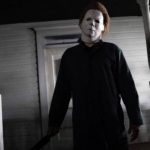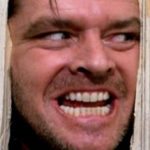 Technology
Technology  Technology
Technology  Humans
Humans 10 Everyday Human Behaviors That Are Actually Survival Instincts
 Animals
Animals 10 Animals That Humiliated and Harmed Historical Leaders
 History
History 10 Most Influential Protests in Modern History
 Creepy
Creepy 10 More Representations of Death from Myth, Legend, and Folktale
 Technology
Technology 10 Scientific Breakthroughs of 2025 That’ll Change Everything
 Our World
Our World 10 Ways Icelandic Culture Makes Other Countries Look Boring
 Misconceptions
Misconceptions 10 Common Misconceptions About the Victorian Era
 Mysteries
Mysteries 10 Strange Unexplained Mysteries of 2025
 Miscellaneous
Miscellaneous 10 of History’s Most Bell-Ringing Finishing Moves
 Technology
Technology Top 10 Everyday Tech Buzzwords That Hide a Darker Past
 Humans
Humans 10 Everyday Human Behaviors That Are Actually Survival Instincts
 Animals
Animals 10 Animals That Humiliated and Harmed Historical Leaders
Who's Behind Listverse?

Jamie Frater
Head Editor
Jamie founded Listverse due to an insatiable desire to share fascinating, obscure, and bizarre facts. He has been a guest speaker on numerous national radio and television stations and is a five time published author.
More About Us History
History 10 Most Influential Protests in Modern History
 Creepy
Creepy 10 More Representations of Death from Myth, Legend, and Folktale
 Technology
Technology 10 Scientific Breakthroughs of 2025 That’ll Change Everything
 Our World
Our World 10 Ways Icelandic Culture Makes Other Countries Look Boring
 Misconceptions
Misconceptions 10 Common Misconceptions About the Victorian Era
 Mysteries
Mysteries 10 Strange Unexplained Mysteries of 2025
 Miscellaneous
Miscellaneous 10 of History’s Most Bell-Ringing Finishing Moves
10 Horror Films Where You Never See the Villain
Horror cinema is known for wearing its heart on its sleeve (literally) when it comes to the savageries that befall its protagonists. And we rarely have more than twenty minutes to get to know the hapless teens, happy campers, and hunted innocents before the blood starts flowing. The villains, monsters, and all-around ne’er-do-wells behind it all often get their way and occasionally get their comeuppance, but there have been a few times in the history of horror when they’ve not really been there at all.
Whether they’re wearing some other poor soul’s skin, orchestrating the bloodshed from the sidelines, or are simply invisible to the naked eye, these villains manage to stay out of the limelight for their film’s entire runtime. But if these flicks prove anything, it’s that the worst horrors are often the ones we are forced to imagine.
Related: Top 10 Unsettling Scenes From Horror Movies And Series
10 It Follows (2014)
Revolutionizing the low-budget horror by combining a stylish, modern feel with a simple yet increasingly terrifying setup, It Follows managed to bring a villain for the ages to the big screen without so much as a fang, claw, or hockey mask in sight.
But those aren’t the only things that are out of sight, as the film—in which high-schooler Jay (Maika Monroe) is stalked by a murderous supernatural being known only as The Entity—disguises its villain as any number of anonymous bystanders. It Follows doubles down on Jean-Paul Sartre’s idea that hell is other people (from his 1944 play No Exit) by having its supernatural entity manifest only in its possession of others, who constantly watch and follow Jay.
Though we never get to see the actual being behind the many-faced mask, director David Robert Mitchell intentionally employed a variety of tropes, references, and nods to other horror films. This includes having his first victim fleeing her pursuer in high heels to call back to the film’s forebearers and seed fear of this particular unknown.[1]
9 Oculus (2013)
Centered around a mysterious mirror called the Lasser Glass, Mike Flanagan’s Oculus sees siblings Kaylie (Karen Gillan) and Tim (Brenton Thwaites) struggle to rebuild their relationship after the death of their parents, with Kaylie suspecting their antique mirror is responsible.
Maintaining a hair-trigger tension throughout, the film presents various distortions of reality, making us question everything as the mirror leads the pair to their doom. However, while malevolent spirits from the past are summoned from the reflections, we never get to lay eyes on the original dark force that gives the mirror its supernatural powers; for all the horror involved, the mirror is just glass and shadows.
But not seeing the villain was far from the greatest challenge for Flanagan in bringing the film to the big screen. Shooting on a small set with a mirror-based antagonist was never going to be easy with an entire crew for filming, lighting, and recording sound. To prevent gear and cameramen from being caught in his shots, Flanagan mounted the mirror on a gimbal, so its angle could be tweaked, “editing out” unwanted reflections in real time.[2]
8 The Blair Witch Project (1999)
The Blair Witch Project popularized the found-footage horror subgenre with a digital advertising campaign that portrayed its actors as missing persons. Made on a shoestring budget, directors Daniel Myrick and Eduardo Sánchez sent their cast—Heather Donahue, Michael C. Williams, and Joshua Leonard, all playing fictionalized versions of themselves—out camping in the woods with handheld cameras, shooting footage and improvising the script.
Myrick and Sánchez created disturbances around the trio across eight days and nights, ramping up the tension and eliciting some genuine responses of hunger, terror, and misery from Donahue, Williams, and Leonard. Notably absent, however, is the so-called Blair Witch. The film thrives on shadows, sounds, and first-person, handheld scares, but the monster declines to put in an appearance. The reason is that the directors took their love of ghost-hunting pseudo-documentary films and translated this format into their feature by looking for the “boogeyman” but ultimately never showing it on camera.[3]
7 Paranormal Activity (2007)
Though Blair Witch spawned many copycats and inspired a low-budget revolution, there was only one film in the subsequent decade that managed to captivate audiences in the same way: Paranormal Activity.
Paranormal Activity shows a series of increasingly violent disturbances caused by an evil presence in an average suburban home. Homeowners Katie and Micah’s (Katie Featherston and Micah Sloat) efforts to capture evidence on tape provide the basis for the film’s footage, and their cameras mounted in static vantage points provide a visual consistency that makes it all the more terrifying.
The film’s iconic nighttime bedroom scenes not only led the marketing campaign but set Paranormal Activity apart from similar films by having an element of the impossible shown on camera. Though the creature known as the Demon is never seen, it pulls bodies from the bed, tramps footprints across the floor, and allows the possessed to exhibit brute feats of strength. Director Oren Peli has remained obstinately tight-lipped on how these elements were achieved but has confirmed that all effects were created via practical means, and the results make for chilling viewing.[4]
6 Cube (1997)
Splatter horror purists know Vincenzo Natali’s Cube as the originator of the death game concept that elevated the Saw franchise (2004–) to well over a decade and a half of sustained international success. It also paved the way for more recent hits like the Korean series Squid Game (2021). But, unlike its many imitators, Cube plays its villain close to its chest.
A group of strangers awakens in a gigantic prison comprised of interlinked cubic cells and are forced to work together in order to escape. Navigating the cells’ traps requires each of their skills as a doctor, police officer, savant, mathematics student, escape artist, and structural architect. However, a gore-laden journey whittles them down to just one survivor, whose fate at the film’s conclusion is left unknown.
Though the traps are savage and the facility is regulated by some unseen entity, all we know of the Cube’s owners is that they are a clandestine organization with resources to spare. Rather than a defect of the film, this anonymity was essential to Natali’s vision, who wanted a haunted house feel that allowed the evil of the Cube to manifest in the functions of the structure itself.[5]
5 The Endless (2017)
The second invisible being known as The Entity in this article casts doubt on the creativity of some directors, and yet giving such a primal and generic name to your monster helps connect it to an audience’s deeper, darker fears. Certainly, precious little about writer-directors Justin Benson and Aaron Moorhead’s The Endless can be accused of lacking creativity.
The film sees Benson and Moorhead star as brothers Justin and Aaron, ex-members of a “UFO death cult” who are drawn back to the cult’s camp in the woods, where a mysterious force—The Entity—is creating time loops and keeping the cultists trapped. Though the effects of The Entity are witnessed in their multitude, from playing tug-of-war with the campers at night to turning people into viscera on the spot, the god-like being never manifests as something tangible.
Though we don’t see The Entity, we are afforded a glimpse into its perspective, as the camera often floats high above the action, giving the impression of this all-encompassing predator tracking its prey. And it is quite literally floating—the directors used evermore sophisticated drone technology to carry their cameras and achieve previously impossible shots.[6]
4 Final Destination (2000)
In Julius Caesar, Shakespeare writes, “Cowards die many times before their deaths; The valiant never taste of death but once,” and Final Destination takes this idea to its postmodern extreme. After experiencing a premonition and narrowly avoiding a fiery demise aboard a plane to Paris, Alex (Devon Sawa) and six others are gradually demoralized and crippled by the fear and apparent inevitability of their deaths before succumbing to a series of freak accidents.
The film straddles the notion of fate and a finite, pre-destined amount of time that each person has to live. As a result, Alex and his friends face both the concept and the mythological personification of death. As viewers, we see the hand of death at work in a series of improbable occurrences, but the Reaper’s cloak, skull, and scythe never appear.
Also absent from the film are FBI agents Mulder and Scully, despite its ties to The X-Files. Originally conceived as an episode for the TV show, Final Destination scriptwriter Jeffrey Reddick expanded it for the big screen under the original title of Flight 180. This allowed for far more extreme and creative kills than The X-Files could have broadcast, but with a villain as evasive as the cigarette-smoking man himself.[7]
3 Vivarium (2019)
Lorcan Finnegan’s science-fiction horror Vivarium stars Jesse Eisenberg and Imogen Poots as Tom and Gemma, a young couple in search of their ideal starter home. But their estate agent leaves them stranded after viewing a new build in a labyrinthine development of identical houses. Unable to escape the neighborhood, they reluctantly begin a life here, raising a mysterious child that has been left on their doorstep. The cycle perpetuates as the child they raise orchestrates their deaths and takes the place of the real estate agent, with new couples coming in looking for a house.
Vivarium serves as an extended metaphor for middle-class suburban life, and perhaps for that reason more than any other, the villain—the one orchestrating their perplexing entrapment—never makes themselves known. In this sense, Finnegan intended the villainy of the film to arrive in the mundane—the endless escape hole Tom digs in the backyard representing the work and mortgages that trap people in such lives.[8]
2 Bird Box (2018)
Based on the novel of the same name by Josh Malerman, Bird Box depicts a society torn apart by invisible monsters whose mere appearance drives witnesses to madness and suicide. Caught in the middle of this is Malorie (Sandra Bullock), a habitual loner forced to work with others to keep herself and her children alive.
Featuring more unspecified “Entities,” Bird Box explicitly ties the concept to all folklores and mythologies—a deadly supernatural force spanning religions and cultures that arrives to bring judgment and ruin. Though most of the film’s characters shield themselves from viewing the creatures using blindfolds, curtains, and blacked-out windows, our privileged perspective as viewers unfortunately doesn’t reveal anything of the monsters—they arrive with the voices of the dead and the force of the wind but remain entirely invisible.
However, director Susanne Bier originally shot a scene in which one of the creatures reveals itself. But the effect was deemed comical and counterproductive to the film’s tension and was removed from the final cut. And we’re lucky it was because our imaginations are far scarier than what Bullock described as a “green man with a baby face.”[9]
1 Hereditary (2018)
Ari Aster’s first feature film Hereditary brought pure, undiluted terror back to the horror genre with two hours of relentless tension, authentic scares, and a devious, hell-driven villain unlike any other.
The film centers around the personal tragedies befalling miniaturist Annie Graham (Toni Collette), her husband Steve (Gabriel Byrne), and their children Peter and Charlie (Alex Wolff and Milly Shapiro). After Charlie is decapitated in a fluke accident, the family’s attempts to commune with her on the other side lead to disturbing consequences at the hands of the demon Paimon, who manipulates and possesses the Grahams until they are no more.
Paimon is only seen in the actions and utterances of the bewitched family members, which is unsurprising given that Aster cites Rosemary’s Baby as one of the film’s big influences—a film in which the true antagonist (the Devil) operates from the shadows. The reason Aster didn’t use the Devil himself was simply because it had been done so many times before.[10]








